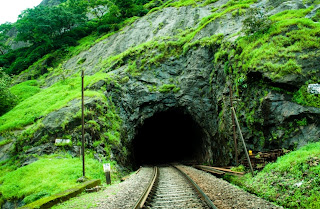A compendium of interesting places, hidden wonders, Beautiful Places, strange travel destination, tourist attractions.
Thursday, 12 September 2013
Friday, 6 September 2013
Sutherland Falls New Zealand
Stunning natural
Sutherland Falls is a waterfall high volume of the three steps in the
succession really fast along the Arthur River, which spills over from a
pair of sizable Lakes carved glacial basin high on
mountain slopes in New Zealand Fiord-land National Park. 3 drops of
waterfalls stand 748 feet tall, 815 yards, and 338 yards respectively,
happen sequentially so that when observed from the air fall seems to be
one long drop that has an impact on the bedrock
in places. Sutherland Falls from the castle of Thunder filled the
majestic mountain. Arthur River heads in simple glaciers feed into a
small lake unnamed then spilled onto the Quill Lakes in the waterfall
itself. Due to the volume of rainfall the region receive
mass, glaciers sustain pretty well and always provide reliable streams
of the Lake over the fall and thus remain very steady all year.
Sutherland Falls is
reachable only by foot through the popular Milford Track. Electric
pedestrian potentially hike to a waterfall in one day, but 15 1/2 miles
(one way) walk from the passenger ferry in Milford
Sound will drive the majority of the people so it’s best to stay when
hiking to a waterfall. The sight from the air is also common, with many
flight service views are available in the nearby town of Te Anau. New
Zealand is a country that has a very high concentration
of waterfalls. However; unluckily many of the best isolated far inland
and very hard to access. But fortunate Sutherland Falls absolute best in
this country is with no trouble to access via a very popular trail
system but can also be seen easily from the air
thanks to the growing tourism industry in the region. If you are traveling the South Island of New Zealand, the Sutherland Falls should
be at the very top of the list to seen the waterfall. Sutherland waterfalls
is named after Donald Sutherland, a visitor who
unearthed the falls in 1880. William Quill Lake, which packed the
waterfall named for, thought to be responsible for the first
measurements of the fall are really climbing the head-wall beside a
waterfall.
Monday, 2 September 2013
Jiuzhaigou Valley National Park Wu Hua Hai China
Most of the travelers said that if there should be wonderlands on the earth, Jiuzhaigou Valley must be one of them. There is no equal elsewhere that has sceneries and fables of dreamlike eloquence, or natural purities like a fairyland. The awesome Jiuzhaigou Valley is situated in Nanping County, 450 KM to the north of Chengdu City. Its name is due to the existence of nine stockaded villages of Tibetan origin, and it is always regarded as a holy mountain and watercourse by the Tibetan people. The valley is great masterpiece of nature having dreamlike scenery, which combines, scenic waterfalls, blue lakes, verdant forests, snow-covered mountains, and the folk customs of the Tibetan and Qiang peoples. More than just stunning scenery, Jiuzhai Valley National Park is home to nine Tibetan villages, more than 220 bird species as well as a number of endangered plant and animal species, as well as the giant panda, Sichuan golden monkey, the Sichuan takin and numerous orchids and rhododendrons.
It is China’s foremost national park and is situated at elevations ranging between 6,529 feet to 15,630 feet above sea level. Situated on the edge of the Tibetan Himalayan Plateau in Northern Sichuan Province it is easily accessible by direct flights from Beijing, Shanghai, Xian, Chengdu, Chongqing and Hangzhou. Jiuzhai Valley provides spectacular scenery throughout the year making it one of China’s most treasured scenic sites. 7 of the 9 Tibetan villages are still populated today and are readily accessible to tourists are Heye, Shuzheng and Zechawa along the main paths that cater to tourists, selling a variety of handicrafts, souvenirs and snacks. There is also Rexi in the smaller Zaru Valley and behind Heye village are Jianpan, Panya and Yana villages. Guodu and Hejiao villages are no longer populated. Penbu, Panxing and Yongzhu villages lie along the road that passes through the town of Jiuzhaigou/Zhangza outside the valley. In 2003, the everlasting population of the valley was about 1,000 comprising 112 families, and due to the protected nature of the park, agriculture is no longer permitted so the locals now rely on tourism and local government subsidies to make a living.
Subscribe to:
Comments (Atom)

































































